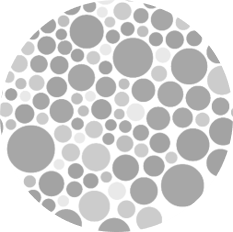
Yoshie Takahashi
Tokyo Gakugei University
Materials Science Forum | 2003
Hideki Hosoda; Masakatsu Tsuji; Yoshie Takahashi; Tomonari Inamura; Kenji Wakashima; Yoko Yamabe-Mitarai; Shuichi Miyazaki; Kanryu Inoue
In order to develop Ti-Ni base shape memory alloys (SMAs), the effects of ternary additions on phase constitution and mechanical properties were investiga ted for TiNi alloys containing some platinum group metals: Ir, Rh and Pt. All the al loys fabricated were made by Ar arc melting method using high purity elemental materials fol owed by hot-forging at 1173-1673K in Ar and furnace cooling. Then X-ray diffraction analysis a nd tensile tests were carried out at room temperature (RT). It was found that, whe n the amount of ternary is lower than 10mol%, all the additions reduce martensitic transf ormation temperature ( Ms) of TiNi and B2 phase becomes stable. Besides monoclinic, L1 0 and B19 phases appear for TiNi containing 40-50mol%Ir, 30-50mol%Rh and 20-50mol%Pt, respectively. The t ensile ductility at RT decreases with increasing the amount of terna ry additions, and the ductility becomes very limited when monoclinic (TiIr), L1 0 (TiRh) and B19 (TiPt) phases appear in the Ti-Ni-Ir, Ti-Ni-Rh and Ti-Ni-Pt systems, respectively . Strength strongly depends on Ms and crystal structure of the apparent phase. Small work hardening is recognized in all the alloy systems. Introduction Ti-Ni SMAs exhibit several smart functions represented by shap e memory effect and superelasticity. The applications of the Ti-Ni alloys are, how ever, still limited mainly because the martensitic transformation temperature ( Ms) is below 400K in the binary systems [1]. Then, in order to expand the applications related with SMAs, shape memory alloys actuated at higher temperature than binary Ti-Ni are required. Several investigations have been done for the improvement of actuation temperature of Ti-Ni by a lloying additives [2-4]. Most of additional elements such as Co, Fe, Mn, Cr and V reduce Ms. On the other hand, some refractory metals such as Hf and Zr and platinum group meta ls (PGMs) such as Pd and Materials Science Forum Online: 2003-08-15 ISSN: 1662-9752, Vols. 426-432, pp 2333-2338 doi:10.4028/www.scientific.net/MSF.426-432.2333
Chemotherapy | 2004
Satoshi Yoshizumi; Yoshie Takahashi; Yoshinari Watanabe; Eiichi Okezaki; Yoshikazu Ishii; Kazuhiro Tateda
Background: The in vitro antimicrobial activities of new fluoroquinolones were tested against quinolone-resistant Haemophilus influenzae of clinical isolates. Methods: The nucleotide sequences of the gyrA and parC genes from three ciprofloxacin-resistant strains of Haemophilus influenzae (MIC, 1.56–6.25 µg/ml) were determined. The gyrase was purified from the clinical isolates, and the inhibitory activities of quinolones against the enzyme were tested. Results: These strains possessed at least one amino acid substitution in each of the GyrA (asparagine at residue 88 (Asp-88) to Tyr, Ser-84 to Leu or Ser-84 to Leu and Asp-88 to Asn) and ParC (Glu-88 to Lys). The antibacterial activity of olamufloxacin against the resistant strains was most potent compared with other quinolones, and the inhibitory activities correlated with quinolone resistance of these strains. Conclusions: These results warrant the clinical effects of new types of fluoroquinolones, such as olamufloxacin, against respiratory tract and otolaryngology infections caused by ciprofloxacin-resistant H. influenzae.
Chemical & Pharmaceutical Bulletin | 2001
Akemi Nishimoto; Ken Narita; Shinobu Ohmoto; Yoshie Takahashi; Satoshi Yoshizumi; Toshihiko Yoshida; Noriyuki Kado; Eichi Okezaki; Hideo Kato
Journal of Antimicrobial Chemotherapy | 2001
Satoshi Yoshizumi; Yoshie Takahashi; Mitsuo Murata; Haruki Domon; Nobuhiko Furuya; Yoshikazu Ishii; Tetsuya Matsumoto; Kazuhiro Tateda; Shuichi Miyazaki; Keizo Yamaguchi
Journal of Antimicrobial Chemotherapy | 1997
Takashi Deguchi; Mitsuru Yasuda; Satoshi Ishihara; Yoshie Takahashi; Eiichi Okezaki; Osamu Nagata; Isao Saito; Yukimichi Kawada
Chemotherapy | 2004
Satoshi Yoshizumi; Yoshie Takahashi; Yoshinari Watanabe; Eiichi Okezaki; Yoshikazu Ishii; Kazuhiro Tateda; F. Meyer; A. Lueck; A. Hribaschek; H. Lippert; K. Ridwelski; Tetsuya Oguri; Carrillo-Muñoz Aj; A. Guglietta; Constantinos L. Petrogiannopoulos; Sotirios G. Kalogeropoulos; Dimitrios C. Dandakis; Georgios A. Hartzoulakis; George N. Karahalios; Christos P. Flevaris; Antonios K. Zacharof; Hiroyuki Achiwa; Daisuke Kato; Hiroyoshi Maeda; Takashi Niimi; Shigeki Sato; Ryuzo Ueda; A. Lale Doğan; Ayça Doğan; Hande Canpinar
Journal of Antimicrobial Chemotherapy | 1997
Takashi Deguchi; Mitsuru Yasuda; Takeshi Kawamura; Yoshie Takahashi; Eiichi Okezaki; Osamu Nagata; H Kato; Yukimichi Kawada
Materials Science Forum | 1996
Yoshie Takahashi; Hitoshi Ishii
Materials Science Forum | 1992
Tomoyuki Terai; Yoshie Takahashi
Chemotherapy | 2004
Satoshi Yoshizumi; Yoshie Takahashi; Yoshinari Watanabe; Eiichi Okezaki; Yoshikazu Ishii; Kazuhiro Tateda; F. Meyer; A. Lueck; A. Hribaschek; H. Lippert; K. Ridwelski; Tetsuya Oguri; Carrillo-Muñoz Aj; A. Guglietta; Constantinos L. Petrogiannopoulos; Sotirios G. Kalogeropoulos; Dimitrios C. Dandakis; Georgios A. Hartzoulakis; George N. Karahalios; Christos P. Flevaris; Antonios K. Zacharof; Hiroyuki Achiwa; Daisuke Kato; Hiroyoshi Maeda; Takashi Niimi; Shigeki Sato; Ryuzo Ueda; A. Lale Doğan; Ayça Doğan; Hande Canpinar



